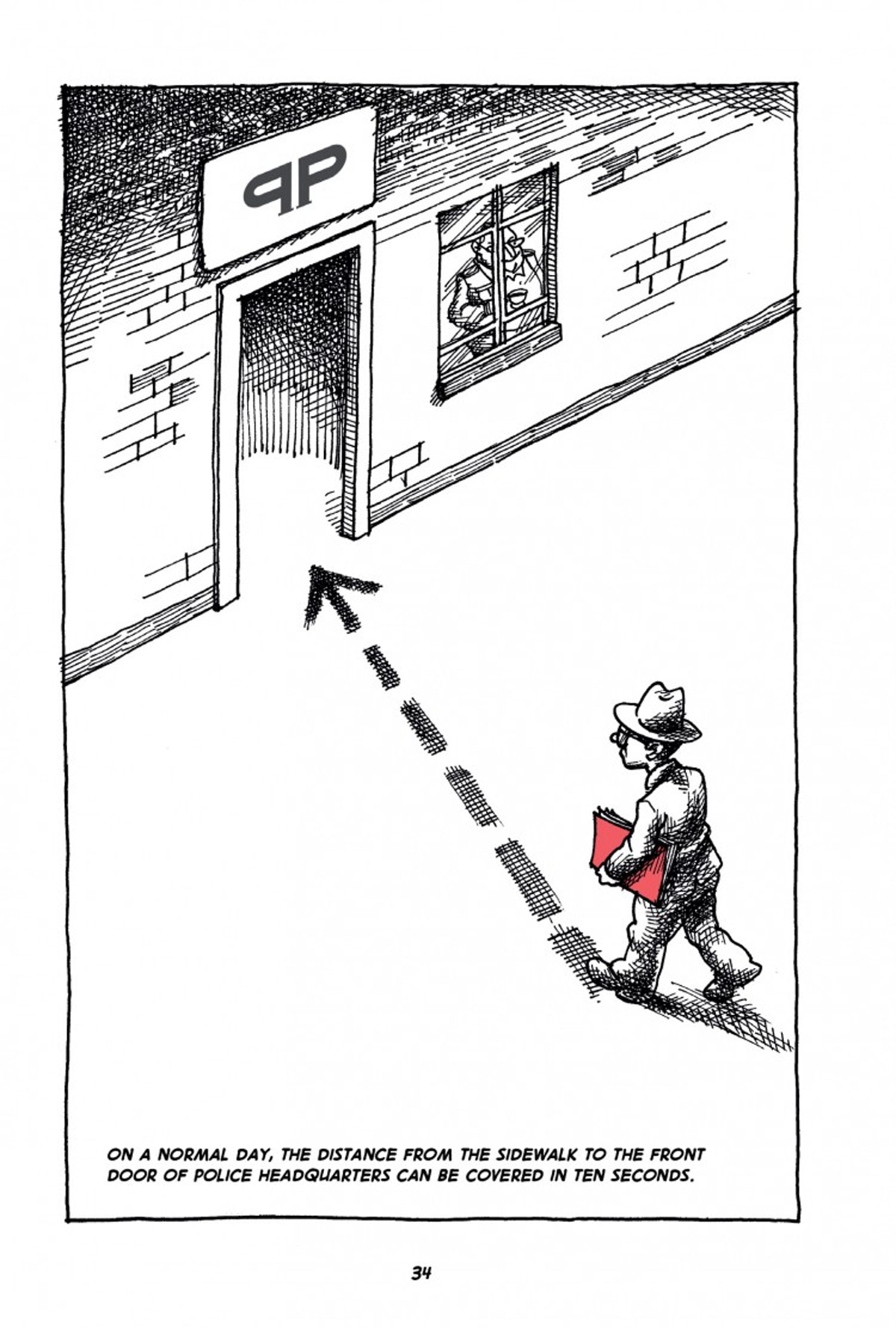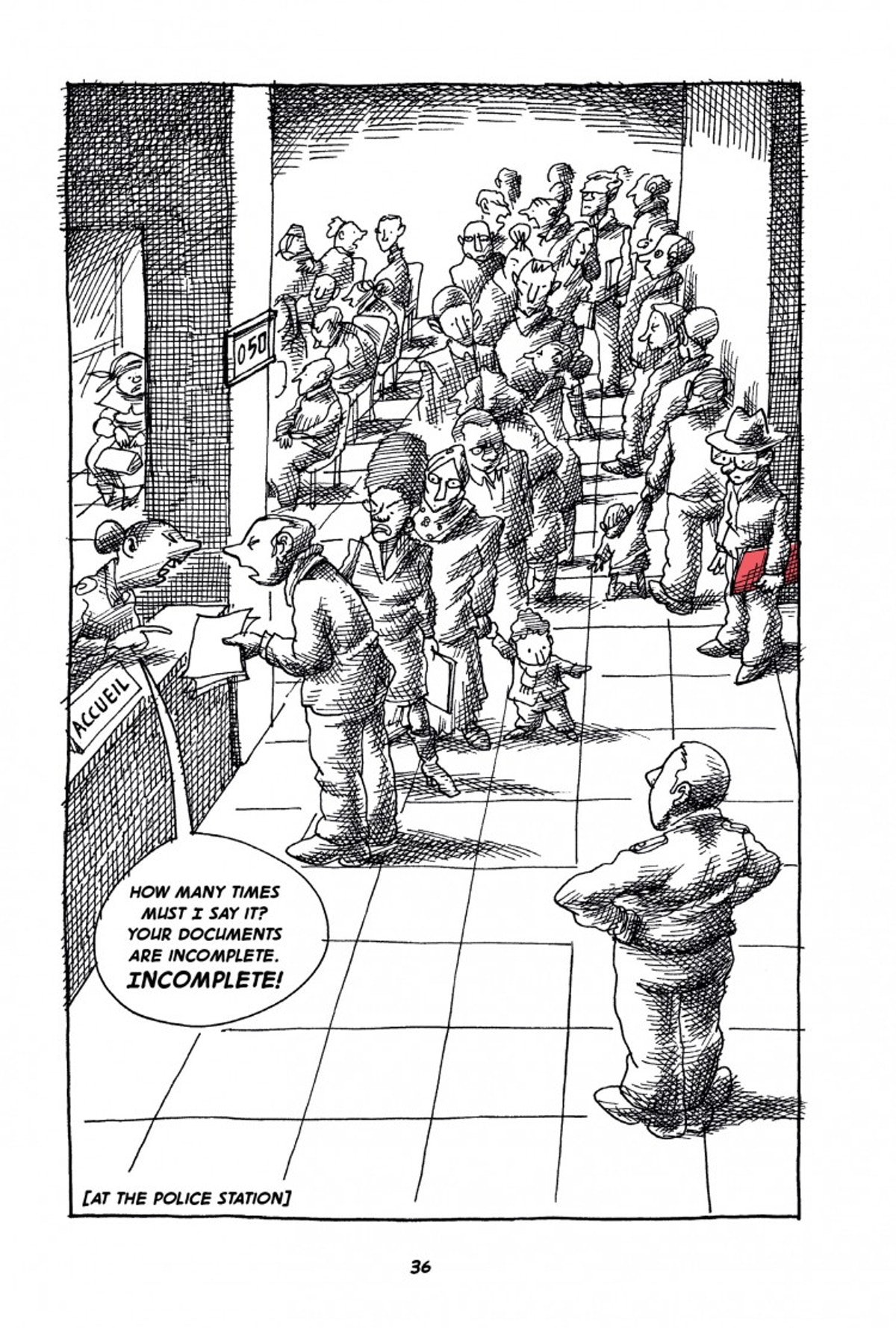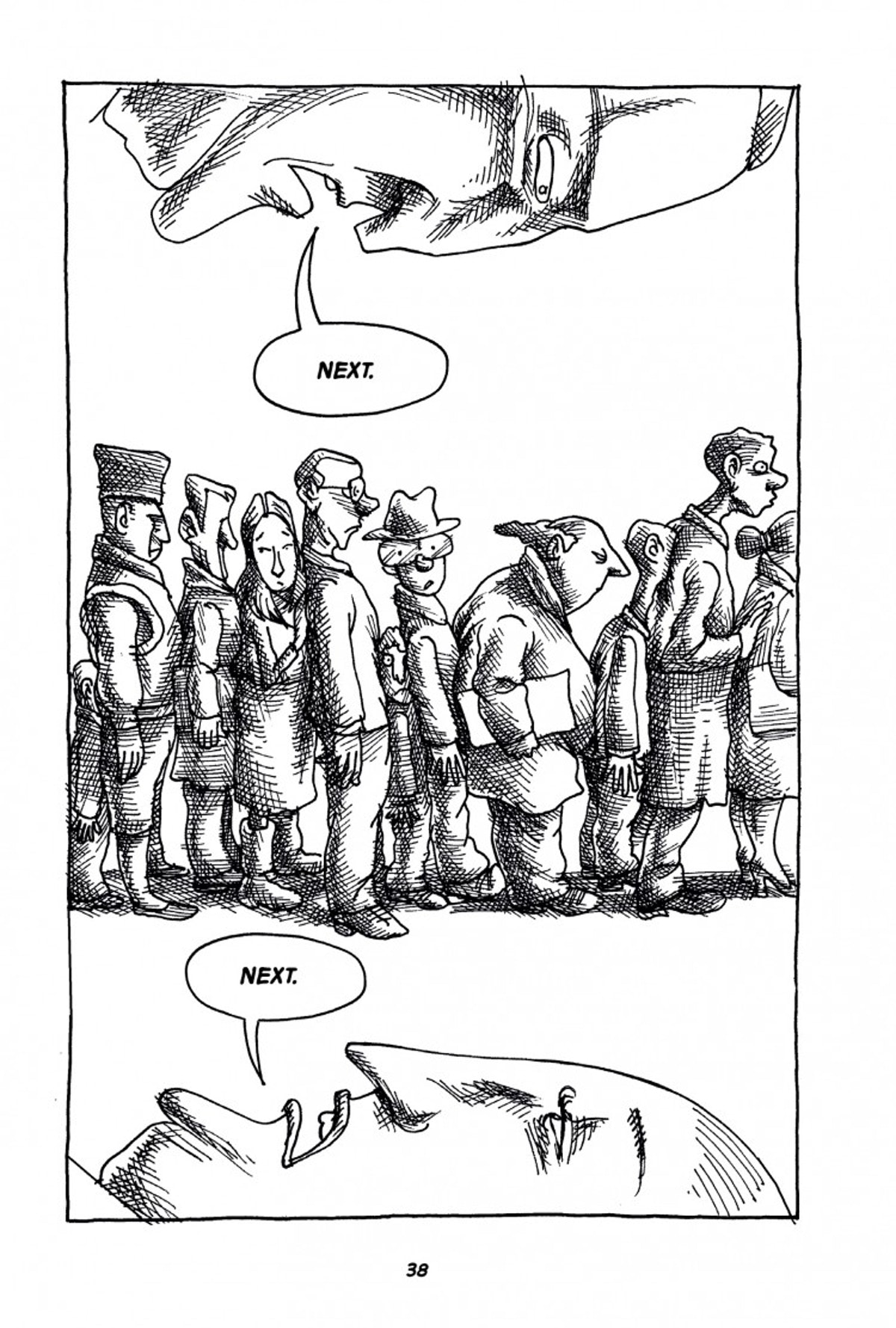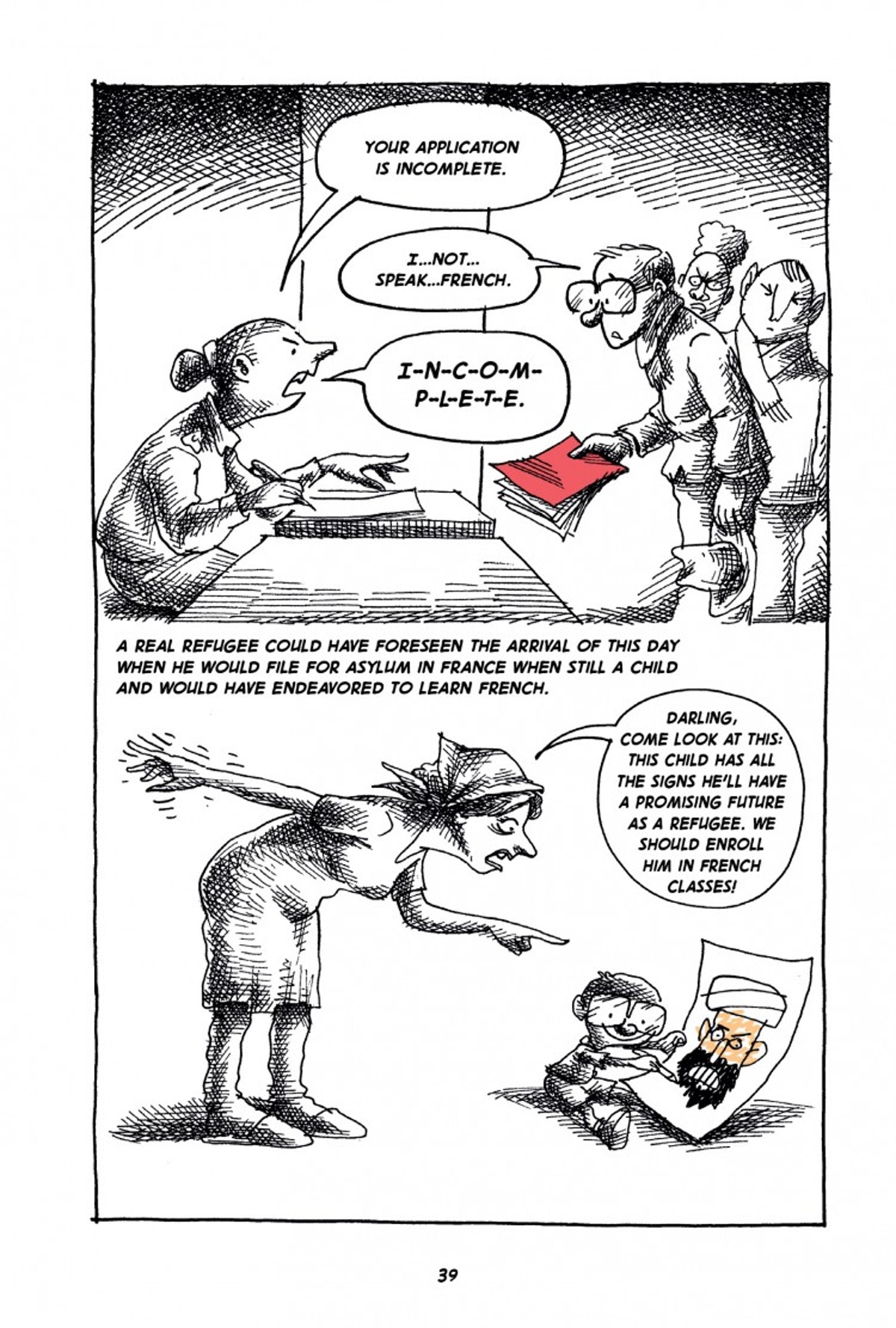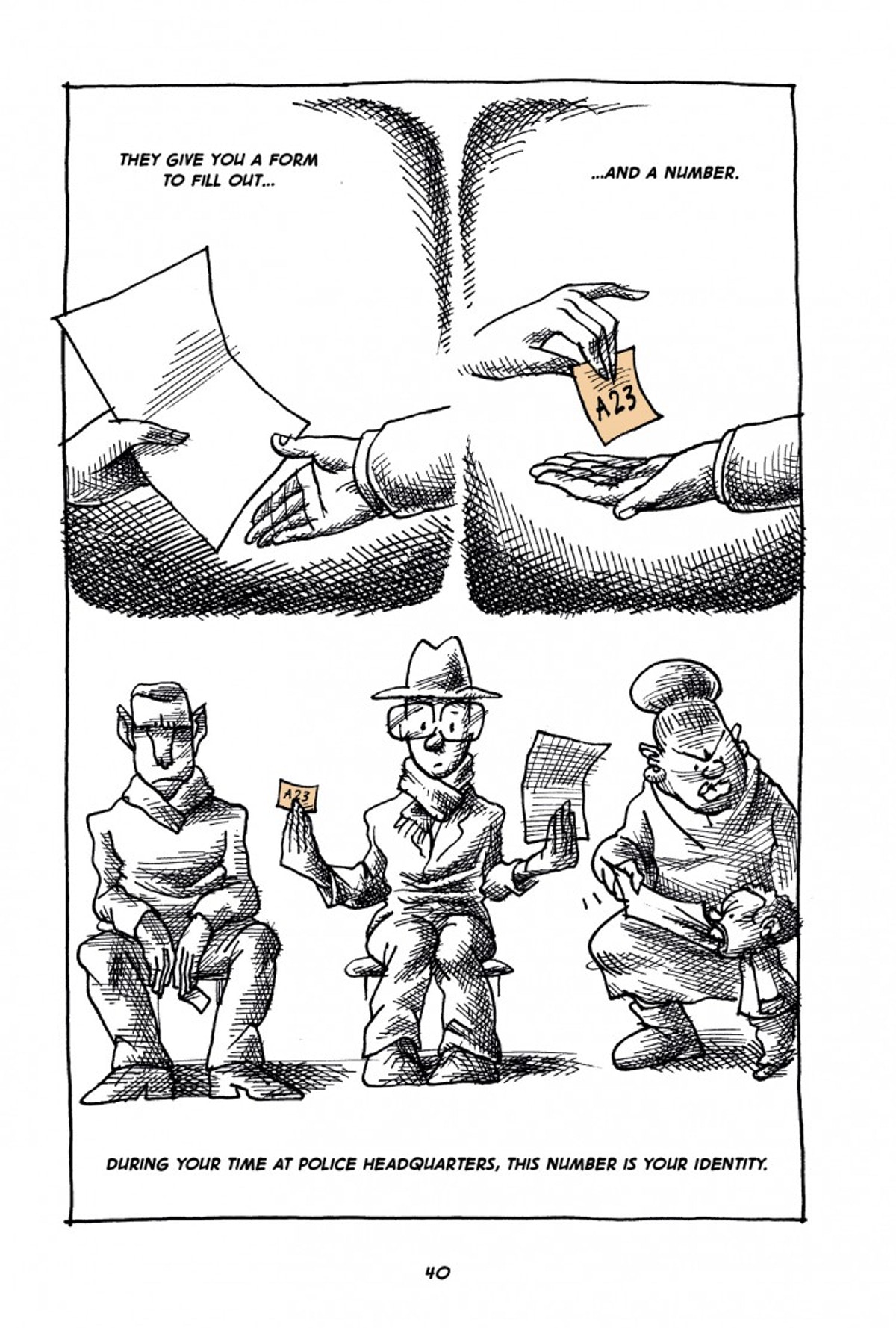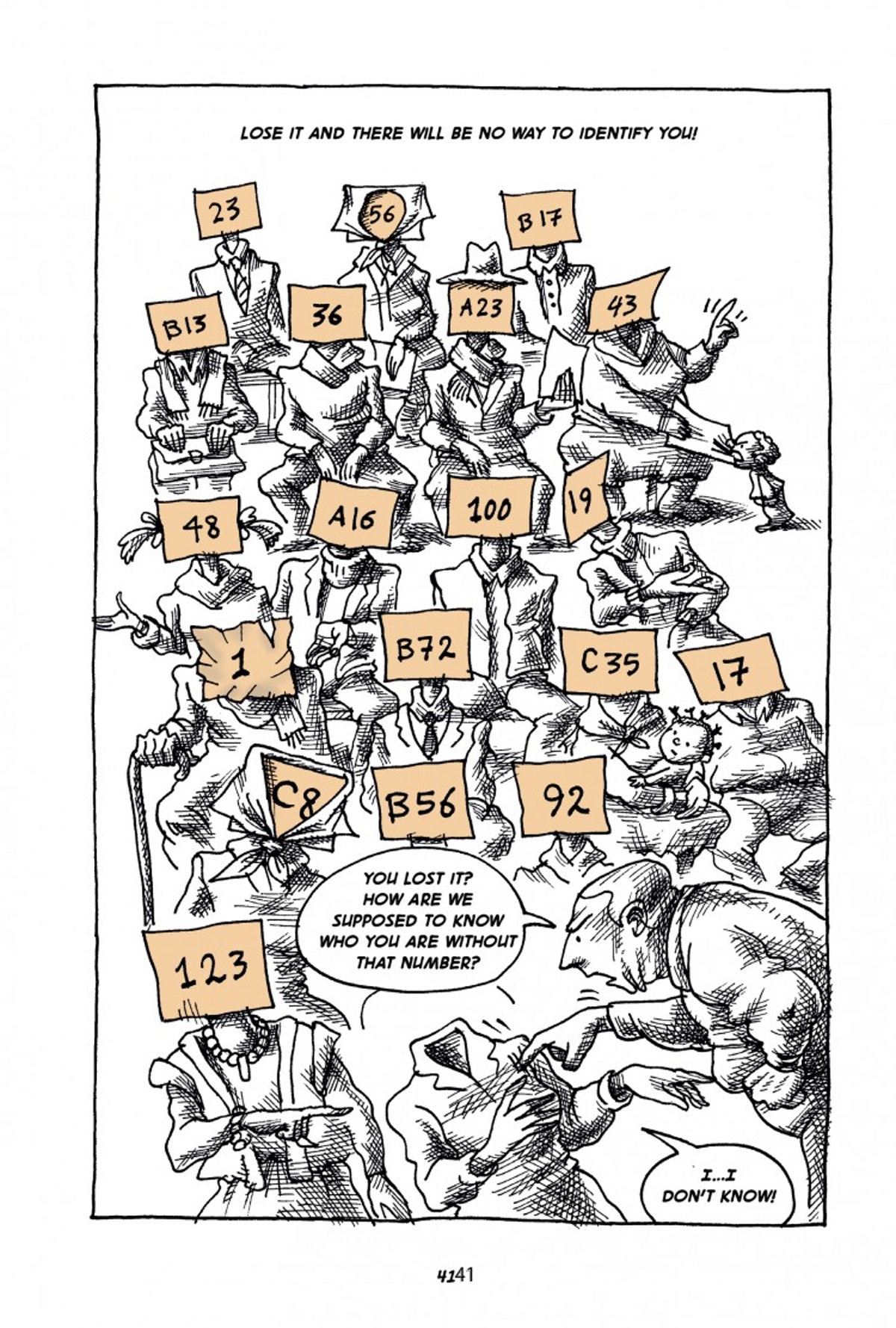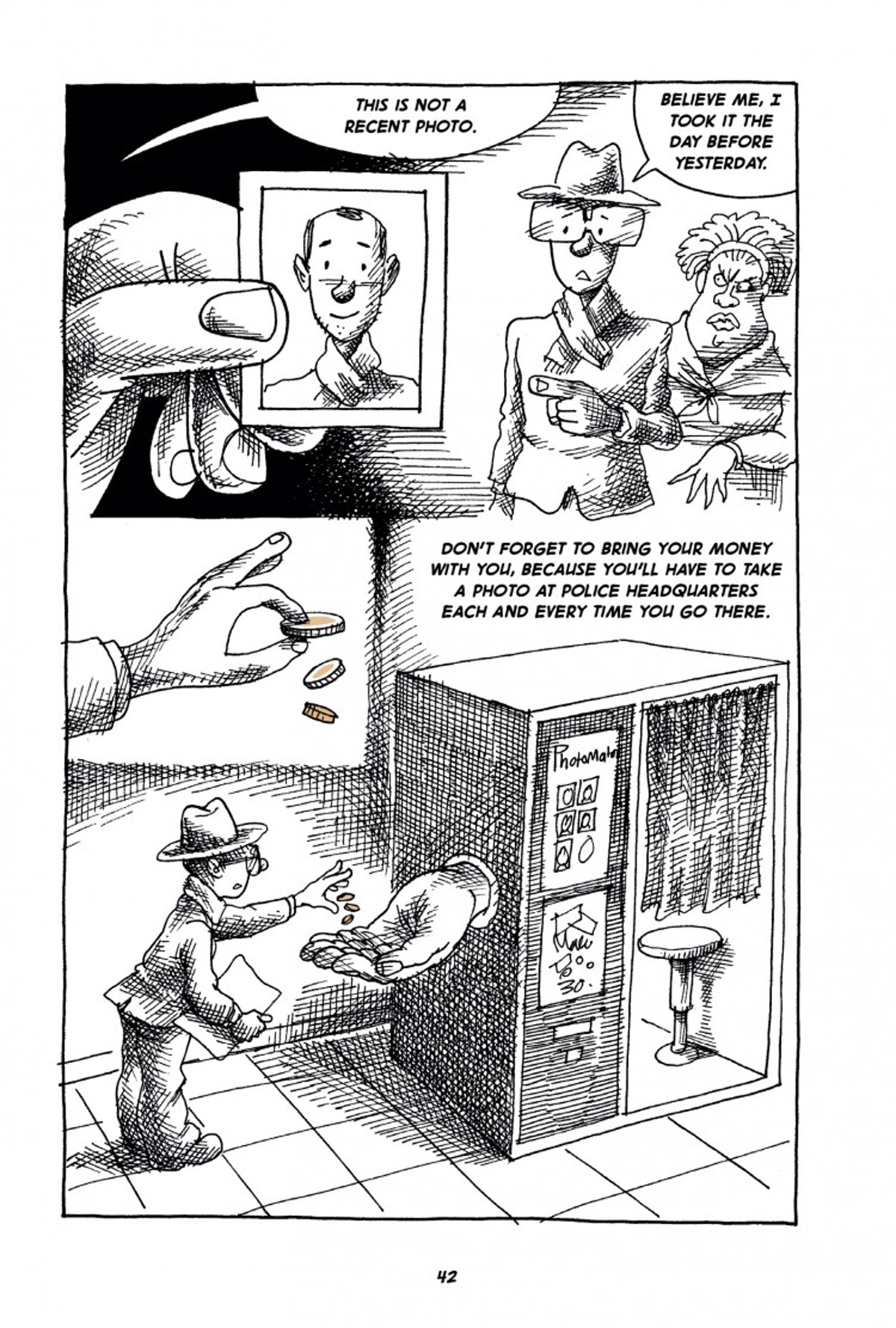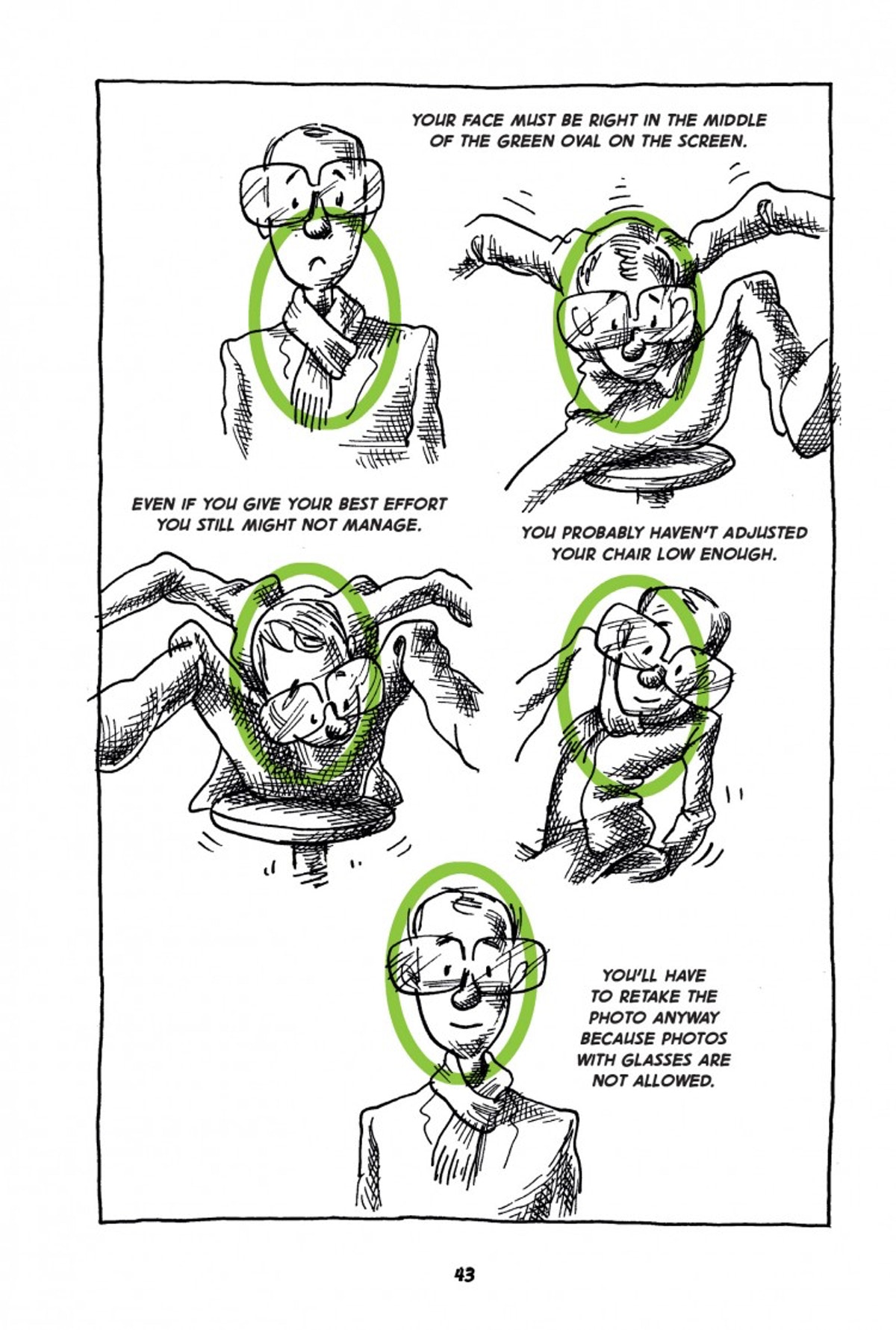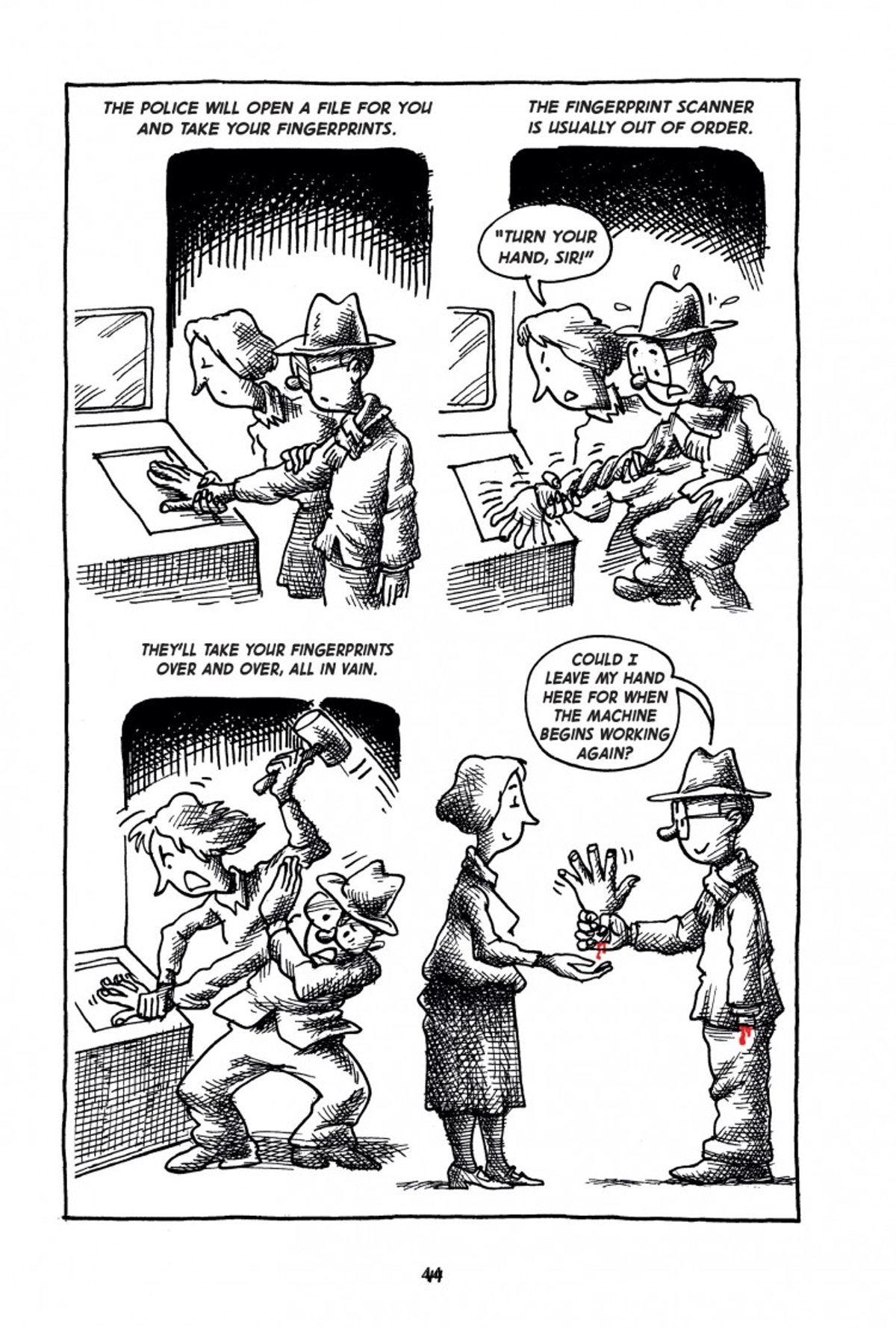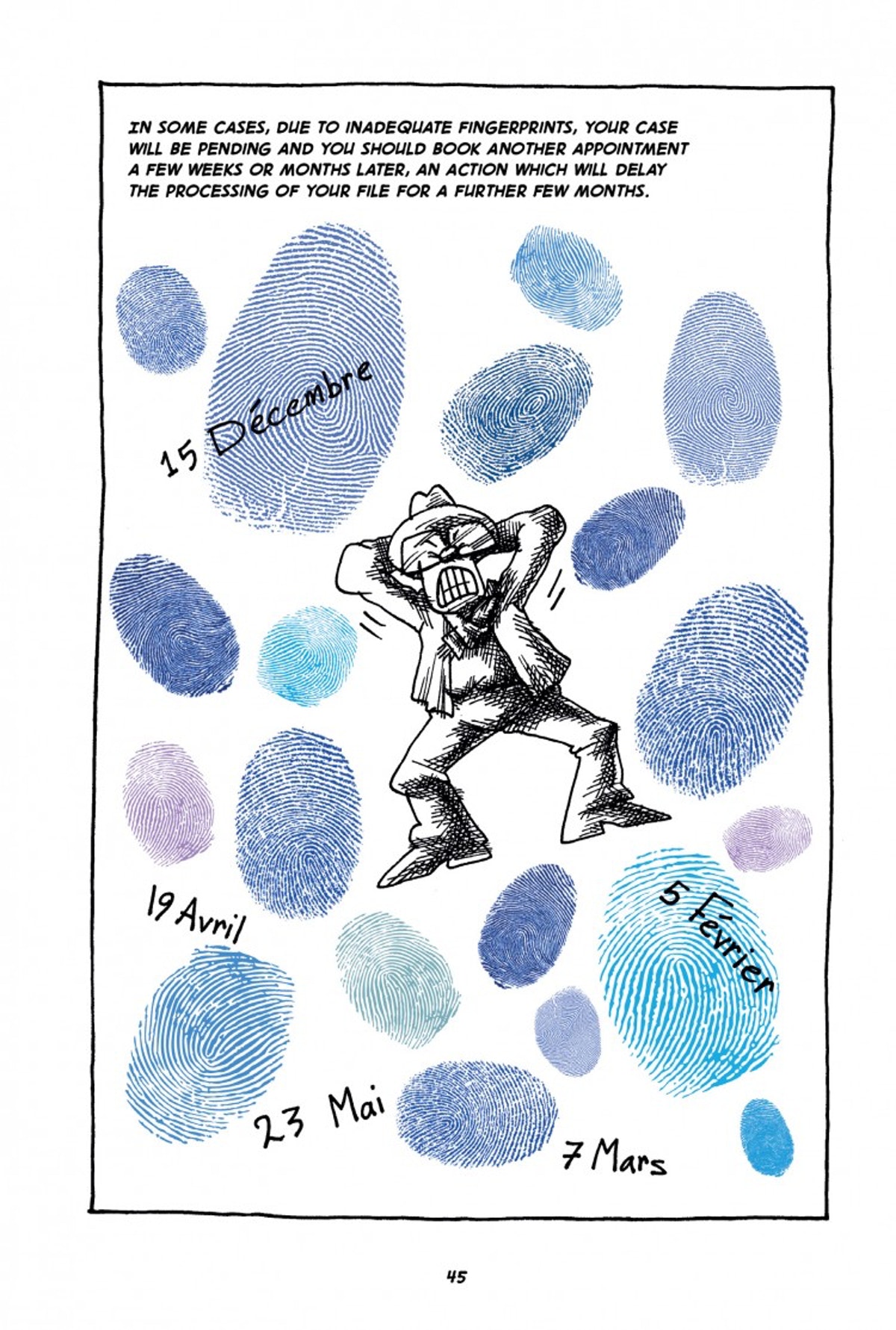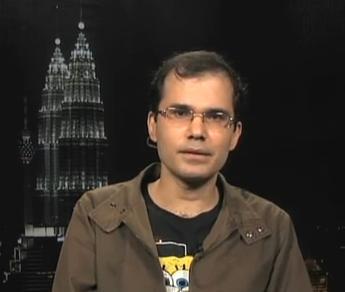On a normal day, the distance from the sidewalk to the front door of police headquarters can be covered in ten seconds.
(A man in glasses, presumably the narrator, carries a sheaf of red documents and walks towards an open doorway.)
But on days the station is open to refugees, it can take three hours to reach the door!
(A crowd waits; the man in glasses from the first picture is at the very end of the line. From behind the door, an unseen voice shouts: "Next!")
(The man in glasses waits at the back of a winding line. At the front of the line, an officer is chastising a hopeful refugee.)
IMMIGRATION OFFICIAL: "How many times must I say it? Your documents are incomplete. Incomplete!"
[At the police station]
IMMIGRATION OFFICIAL 1: "Take off your hat."
(The man in glasses removes hat, looking worried.)
IMMIGRATION OFFICIAL 2: "Turn off your phone."
(A woman holding a phone obeys.)
Bear in mind that at the police station you're likely to hear one word over and over:
IMMIGRATION OFFICIAL 1: "Next."
IMMIGRATION OFFICIAL 2: "Next."
IMMIGRATION OFFICIAL 3: "Next."
IMMIGRATION OFFICIAL 1: "Next."
(Sandwiched between the enormous profiles of the immigration officials, worried people wait in line. The man in glasses is among them.)
IMMIGRATION OFFICIAL 2: "Next."
IMMIGRATION OFFICIAL: "Your application is incomplete."
MAN IN GLASSES: "I... not... speak... French."
IMMIGRATION OFFICIAL: "I-N-C-O-M-P-L-E-T-E."
A real refugee could have foreseen the arrival of this day when he would file for asylum in France when still a child and would have endeavored to learn French.
(A new frame: a proud child displays a cartoon of an imam.)
MOTHER: "Darling, come look at this: this child has all the signs he'll have a promising future as a refugee. We should enroll him in French classes!"
They give you a form to fill out...and a number. During your time at police headquarter, this number is your identity.
(The man in glasses holds up his number: A23.)
Lose it and there will be no way to identify you!
(A line of refugees wait in line, each with a number instead of a face: 23, 56, B17, B13, 36, A23, 43, 48, A16, 100, 19, 1, B72, C35, 17, C8, B56, 92, 123... The person at the front has no number, and thus is headless.)
IMMIGRATION OFFICIAL to a headless refugee: "You lost it? How are we supposed to know who you are without that number?"
HEADLESS REFUGEE: "I...I don't know!"
IMMIGRATION OFFICIAL: This is not a recent photo. MAN IN GLASSES: Believe me, I took it the day before yesterday.
Don't forget to bring your money with you because you'll have to take a photo at police headquarters each and every time you go there.
(A giant hand reaches out from the photo booth to take the man's coins.)
Your face must be right in the middle of the green oval on the screen. Even if you give your best effort you still might not manage. You probably haven't adjusted your chair low enough.
(The man in glasses contorts himself into several positions, finally managing to place his face inside the green oval.)
You'll have to retake the photo anyway because photos with glasses are not allowed.
The police will open a file for you and take your fingerprints. The fingerprint scanner is usually out of order.
IMMIGRATION AGENT to MAN IN GLASSES: "Turn your hand, sir!"
They'll take your fingerprints over and over again, in vain.
(The immigration agent hits the man's hand with a hammer.)
MAN IN GLASSES (holding out his own dismembered hand): "Could I leave my hand here for when the machine begins working again?"
(The immigration agent smiles.)
In some cases, due to inadequate fingerprints, your case will be pending and you should book another appointment a few weeks or months later, an action which will delay the processing of your file for a further few months.
(An array of giant blue fingerprints litters the background, above which are written dates in French: 15 Décembre, 19 Avril, 5 Février, 23 Mai, and 7 Mars. The refugee stands frustrated and shaking in the center of these fingerprints.)







